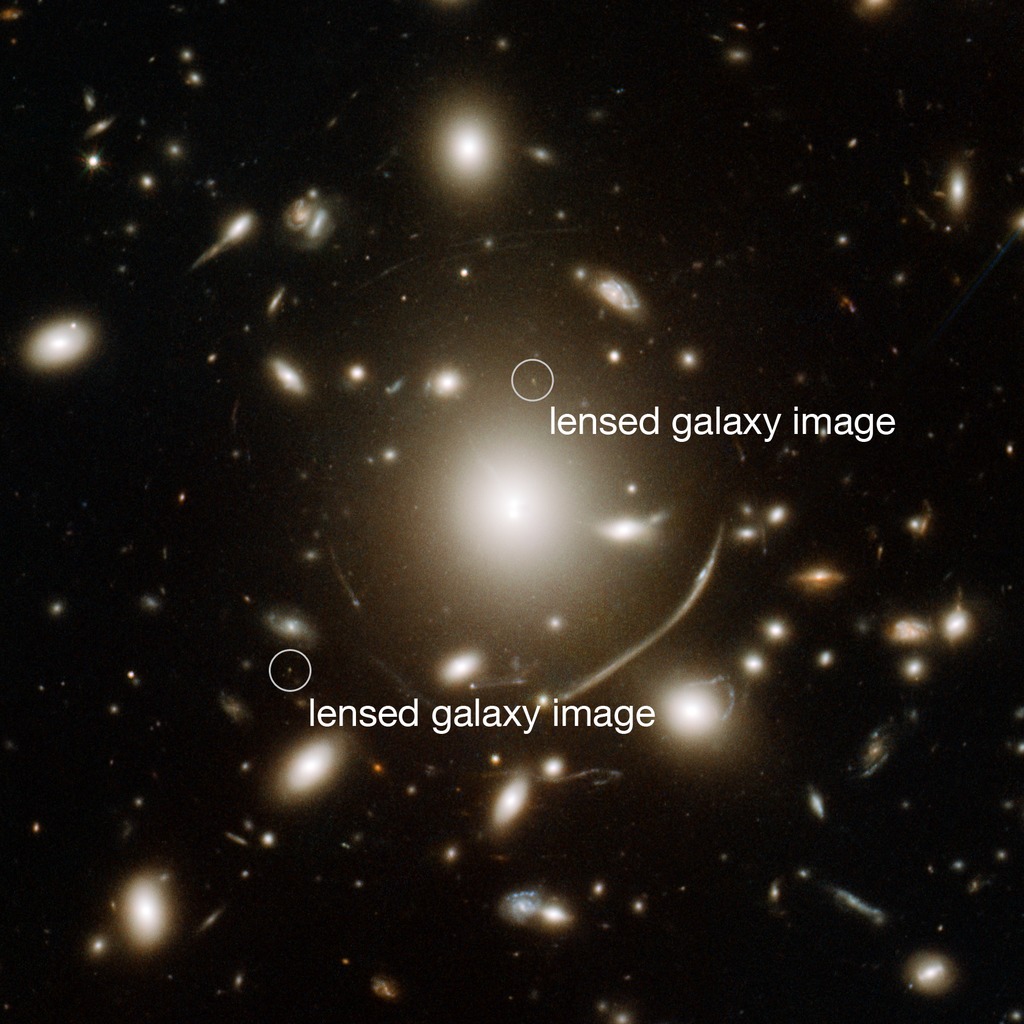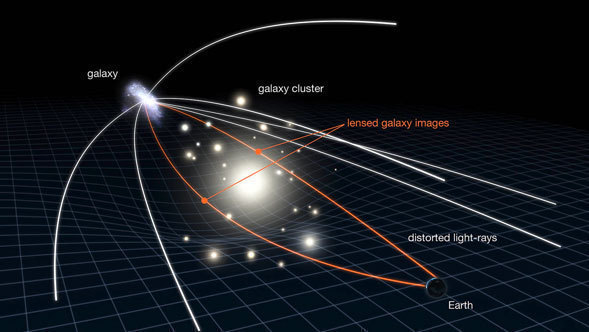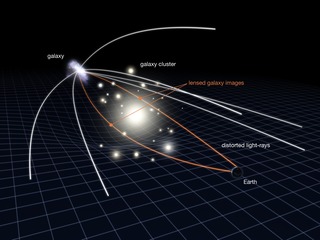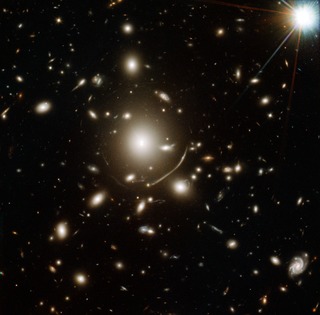
Credit: NASA, ESA, J. Richard (CRAL) and J.-P. Kneib (LAM)
Observation • April 12th, 2011 • ssc2011-05a
ssc2011-05a
The giant cluster of elliptical galaxies in the center of this image contains so much dark matter mass that its gravity bends light. This means that for very distant galaxies in the background, the clusters gravitational field acts as a sort of magnifying glass, bending and concentrating the distant objects light towards Hubble. These gravitational lenses are one tool astronomers can use to extend Hubbles vision beyond what it would normally be capable of observing.
Using Abell 383, a team of astronomers have identified and studied a galaxy so far away we see it as it was less than a billion years after the Big Bang. It is visible as two tiny dots (labelled) on either side of the bright cluster galaxy in the centre. Distant objects seen through gravitational lenses are typically multiply imaged and heavily distorted.
Viewing this galaxy through the gravitational lens meant that the scientists were able to discern many intriguing features that would otherwise have remained hidden, including that its stars were unexpectedly old for a galaxy this close in time to the beginning of the Universe. This has profound implications for our understanding of how and when the first galaxies formed, and how the diffuse fog of neutral hydrogen that filled the early Universe was cleared.
Acknowledgement: Marc Postman (STScI)
About the Object
- Name
- Abell 383
- Type
- Galaxy > Type > Gravitationally Lensed
- Galaxy > Grouping > Cluster
- Redshift
- 0.187
Color Mapping
| Band | Wavelength | Telescope |
| Optical | 775 nm | Hubble ACS |
| Optical | 814 nm | Hubble ACS |
| Infrared | 850 nm | Hubble ACS |
| Infrared | 1.1 µm | Hubble WFC3 |
| Infrared | 1.3 µm | Hubble WFC3 |
| Infrared | 1.6 µm | Hubble WFC3 |







